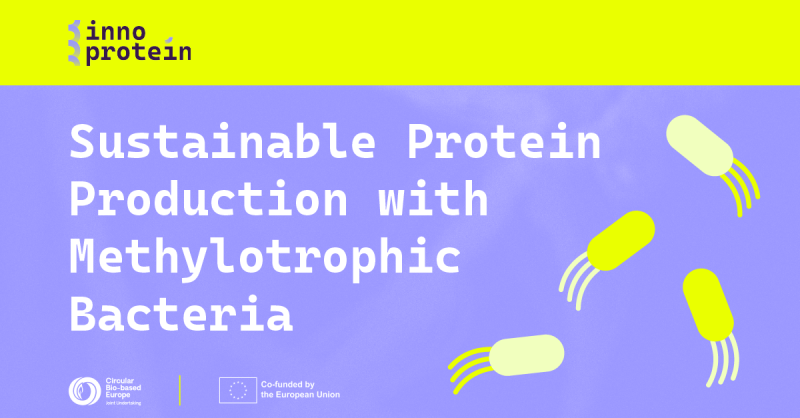Bacteria

1. Why bacteria for protein production?
- Bacteria can produce up to 80% protein in their biomass.
- They grow quickly and use simple, renewable carbon sources (e.g., green methanol).
- Advantages:
- No seasonality.
- No need for arable land or large water volumes.
- High-quality, sustainable protein production.
2. Why do we use methylotrophic bacteria in InnoProtein?
- These bacteria can grow on C1 carbon substrates like methanol or methane.
- Carbon sources come from:
- Renewables (e.g., biogas, solid waste, or CO₂ that can be converted into methanol).
- Methylotrophic bacteria are also microbial factories that can produce:
- Proteins and amino acids.
- Biodegradable plastics (polyhydroxyalkanoates).
- Pigments with antioxidant properties (carotenoids).
3. The process: How bacterial proteins are produced
- Step 1: Fermentation: Bacteria are grown using methanol + mineral compounds.
- Step 2: Separation: The final fermentation broth contains biomass and a liquid fraction which get separated. The wet biomass is used for protein extraction and purification.
- Step 3: Recycling: The liquid fraction is recycled to reduce waste and water consumption, following a circular strategy.
4. Protein extraction and purification
- Greener technologies being tested include:
- Alkaline Autolysis
- Three-Phase Partitioning (TPP)
- Homogenization
- Extracted and purified bacterial proteins are ready for food applications.


